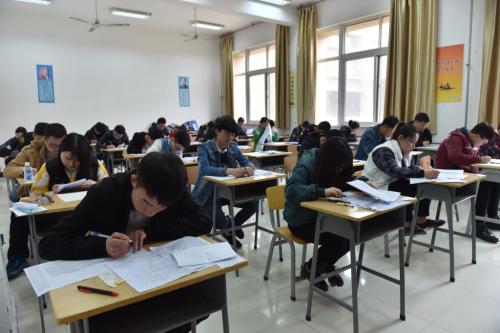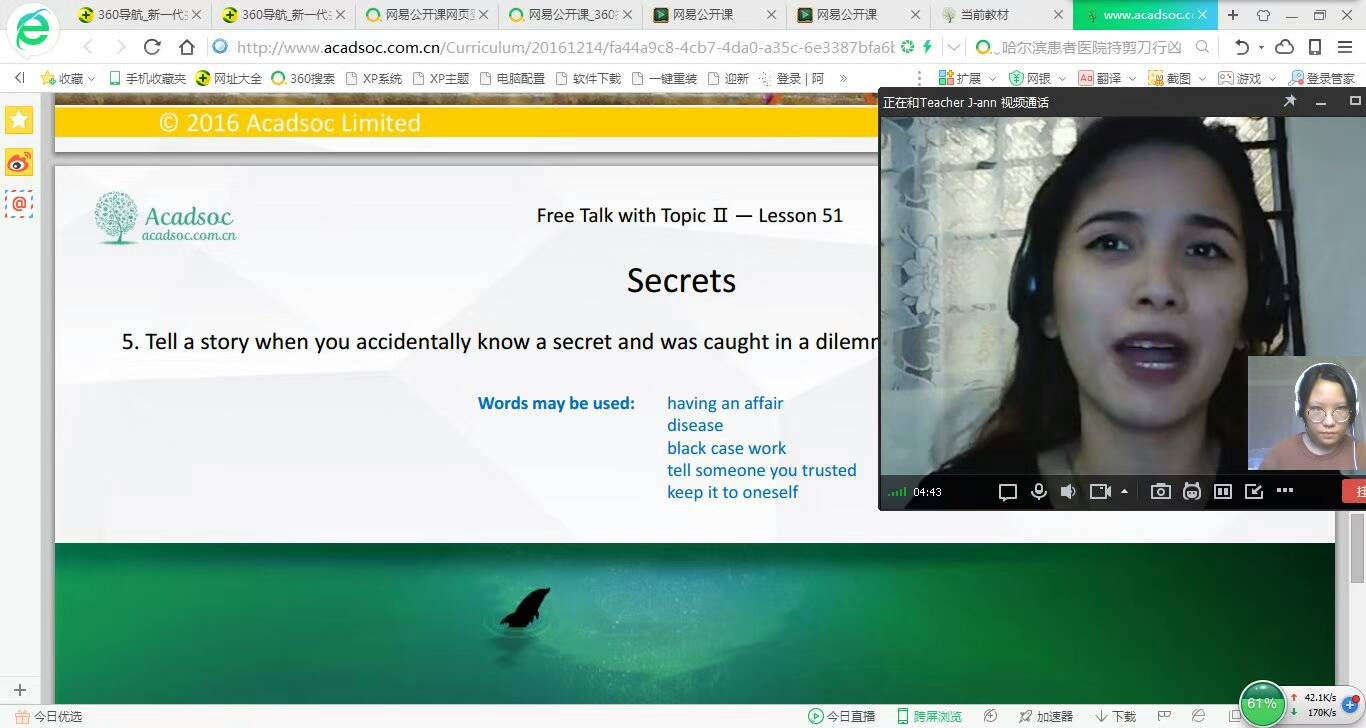求一篇英语四级阅读理解题和答案 还要有解析
的有关信息介绍如下:
Part II Reading Comprehension (35 minutes)Passage OneQuestions 21 to 25 are based on the following passage:Lecturing as a method of teaching is so frequently under attack today from educational psychologists ꘒꐛ竝⪫鞽䟙栌챷http://bulo.hjenglish.com/q/©版权所有沪江网챷栌䟙鞽⪫竝ꐛꘒand by students that some justification is needed to keep it. Critics believe that is results in passive methods of learning which tend to be less effective than those which fully engage the learner. They also maintain that students have no opportunity to ask questions and must all receive the same content at the same pace, that they are exposed only to one teacher' s interpretation of subject matter which will certainly be limited and that, anyway, few lectures rise above dullness. Nevertheless, in a number of inquiries this pessimistic evaluation of lecturing as ateaching method proves not to be general among students although they do fairly often commenton poor lecturing techniques. Students praise lectures which are clear 颃ឞ簁ꁽﲌ剅欉鸿http://bulo.hjenglish.com/menu.htm©版权所有沪江网鸿欉剅ﲌꁽ簁ឞ颃and orderly outlines in which basic principles areemphasised but dislike too numberous digressions(离题) or lectures which consist in part of thecontents of a textbook. Students of science subjects consider that a lecture is a good way to in-traduce a new subject, putting it in its value as a period of discussion of problems and possiblesolutions with their lecturer. They do not look for inspiration(灵感) -this is more commenlymentioned by teachers - but arts students look for originality in lectures. Medical and dentalstudents who have reports on teaching methods, or specifically on lecturing, suggest that thereshould be fewer lectures or that, at the least, more would be unpopular.21. The passage states that A) few students dislike lecturing as a teaching method B) lecturing is a good method of teaching C) lecturing as a teaching method proves to be uninspiring D) most students like lectures because they can fully engage the learner22. According to the critics, A) lectures can't make students active in their studies B) some lecturers' knowledge of their subjects limited C) most lectures are similar in content D) few lectures are dull23. According to this passage, students dislike lectures which A) introduce mat la[ not included in the texbook B) present many problems for discussion C) always w츥췙�ﱯ嚖藵鿿勐http://www.hjbbs.com/©版权所有沪江网勐鿿藵嚖ﱯ�췙츥ander from the subject D) stress the main points24. Lecturing as a teaching method is less appreciated by A) dental teachers B) medical students C) arts lecturers D) science learners25. According to the author, the evaluation of lecturing as a teaching method by educational psychologists is A) defonsive B) conservative C) realistic D) negativePassage TwoQuestions 26 to 30 are based on the following passage: From the moment that an animal is born it has to make decisions. It has to decide which ofthe things around it are for eating, and which are to be avoided when to attack and when to runaway. The animal is, in effect, playing a complicated 譱숵蛐∹䙁뽥獓㷵沪江四六级欢迎您!©版权所有沪江网㷵獓뽥䙁∹蛐숵譱and potentially very dangerous game withits environment, discomfort or destruction. This is a difficult and unpleasant business and few animals would survive if they had tostart from the beginning 덐䵘詉嗝ﲀ鴴耻职http://bulo.hjenglish.com/group.htm©版权所有沪江网职耻鴴ﲀ嗝詉䵘덐and learn about the world wholly by trial and error, for there are thehave possible decisions which would prove fatal. So we find, in practice, that the game is alwaysarranged in favour of the young animal in one way or another. Either the animal is protectedduring the early stages of its learning about the world around it, or the knowledge of which wayto respond is built into its nervous system from the start.The fact that animals behave sensibly can be attributed partly to what we might call genetic(遗传的) learning, to distinguish it from the individual learning that an animal does in thecourse of its own life time. Genetic learning is learning by a species as a whole, and it is achievedby selection of those members of each generation that happen to behave in the right way. How-ever, genetic learning depends upon a prediction that the future will more or less exactly resemble the past. The more variable individual experience is likely to be, the less efficient is geneticlearning as a means of getting over the problems of the survival game. It is not surprising to findthat very few species indeed depend wholly upon genetic learning. In the great majority of animals, behaviour is a compound of individual experience 훟䳀�ꂫ륏�㭽http://bulo.hjenglish.com/goal.htm©版权所有沪江网㭽�륏ꂫ�䳀훟and genetic learning to behave in particular ways.26. According to the first paragraph, the survival game is considered potentially very dangerous because A) animals are constantly threatened by attacks B) wrong decisions will lead to the disappearance of a species C) decisions made by an animal may turn out to be fatal D) few animals can survive in their struggle with the environment27. It is implied but not directly stated in the passage that most animals A) are likely to make wrong decisions B) have made correct decisions for their survival C) depend entirely on their parents in learning about the world around them D) survive by means of individual learning28. Genetic learning is effective only if A) the survival game is arranged in favour of the young animals B) the animals can adapt themselves to the changing surroundings C) circumstances remain more or less the same D) the animals have varied individual experiences29. The best TITLE for this passage would be A) The Decision - Making Ability of Animals B) Survival and Environment C) Reward and Penalty for Animals D) Behaviour 낵㻰畼ᘤ쯜�㏜http://cet.hjenglish.com©版权所有沪江网㏜�쯜ᘤ畼㻰낵and Survival30. How is genetic leaning achieved? A) It is inherited from animals with keen observation. B) It is passed down from those animals that behave in the correct way. C) It is taught to the young generation. D) It is learned by the new generation through trial and error.Passage ThreeQuestions 31 to 35 are based on the following passage: Scientists, like other human beings, have their hopes and fears, their passions 㶪覰䰴似႓ᯎ넗뎖http://www.yeshj.com/©版权所有沪江网뎖넗ᯎ႓似䰴覰㶪and disap-pointments and their strong emotions may sometimes interrupt the course of clear thinkingand sound practice. But science is also self - correcting. The most fundamental principles 骞ཀ泚婶緕쀹蓳熕http://bulo.hjenglish.com/myfeed/©版权所有沪江网熕蓳쀹緕婶泚ཀ骞andconclusions may be challenged. The steps in a reasoned argument must be set out for all to see.Experiments must be capable of being carried out by other scientists. The history of science isfull of cases where previously accepted theories have been entirely overthrown, to be replaced bynew ideas which more adequately explain the data.While there is an understandable inertia - usually lasting about one generation - such revolution in scientific thought are widely accepted as a necessary and desirable element of scientific progress. Indeed, the reasoned criticism of a prevailing belief is a service to the supporters of that belief; if they are incapable of defending it, they are well - advised to ab遀췫伒恶喑诠萼http://bulo.hjenglish.com/event/©版权所有沪江网萼诠喑恶伒췫遀andon it. This self -questioning and error- correcting aspect of the scientific method is its most striking property and sets it off from many other areas of human endeavor, such as religion ⻮ࠤ�❸녇덝沪江四六级欢迎您!©版权所有沪江网덝녇❸�ࠤ⻮and fine arts. The idea of science as a method rather than as a body of knowledge is not widely appreciated outside of science, or indeed in some corridors inside of science. Vigorous criticism is constructive in science more than in some other areas of human endeavor because in it there are adequate standards of validity which can be agreed upon by competent scientists the world over.The objective of such criticism is not to suppress but rather to encourage the advance of newIdeas:those which survive a firm skeptical(怀疑的) examination have a fighting chance of beingright, or at least useful.31. Science is self- correcting because its theories A) have to be revised constantly to conform with ideas which explain the data better B) have reflected the most fundamental principles of nature C) are, more often than not, based on inadequate data D) must be set out for all to see32. It can be learned from the context that the word "inertia" (Para. 2, Line 1) most probably means A) strong resolution B) unwillingness to change C) a period of time D) prevailing belief 33. The "revolution in scientific thought" (Para. 2, Lind 2) refers to A) acceptance of the reasoned criticisms of prevailing scientific theories B) the continuous overthrow of existing scientific theoriesC) the adequate explanation of the data in prevailing scientific theories D) the major discoveries that represent breakthroughs in the history of scientific progress34. The author says that the most striking property of the scientific method is its self- questioning and error - correcting aspect, because it is this aspect that A) is indispensable to the advance of science B) is most widely appreciated by scientists C) helps scientists to ab萿캋켼ᧁ緉�閺http://bulo.hjenglish.com/podcast.htm©版权所有沪江网閺�緉ᧁ켼캋萿andon anything they cannot defend D) sets science off from mary other areas of human endeavor35. The word "it"(Para. 3, Line 4)refers to "_______" A) vigorous criticism B) scientific method C) human endeavor D) sciencePassage FourQuestions 36 to 40 are based on the following passage: My father's reaction to the bank building at 43rd Street and Fifth Avenus in New YorkCity was immediate and definite: "You won' t catch me putting my money in there!" he declared. "Not in that glass box!" Of course, my father is a gentleman of the old school, a member of the generation to whoma good deal of modern architecture is upsetting, but I am convinced that his negative responsewas not so much to the architecture as to a violation of his concept of the nature of money. In his generation money was thought of as a real commodity(实物) that could be carried,or stolen. Consequently, to attract the custom of a sensible man, a bank had to have heavy walls,barred windows, ᅍ俙쎨⍢㼜讔漭呂http://www.hjbbs.com/©版权所有沪江网呂漭讔㼜⍢쎨俙ᅍand bronze doors, to affirm the fact, however untrue, that money would be safeinside. If a building' s design made it appear impenetrable the institution was necessarily reliable, and the meaning of the heavy wall as an architecture symbol dwelt in the prevailing attitude toward money. But that attitude toward money has of course changed. Excepting pocket money, cash ofany kind is now rarely used; money as a tangible commodity has largely been replaced by credit.A deficit(赤字) economy, accompanied by huge expansion, has led us to think of money as aproduct of the creative imagination. The banker no longer offers us a safe: he offers us a service - a service in which the most valuable element is the creativity for the invention of large numbers. It is in no way surprising, in view of this change in attitude, that we are witnessing thedisappearance of the heavy - walled hank. Just as the older bank emphasized its strength, this bank by its architecture boasts of itsimaginative powers. From this point of view it is hard to say where architecture ends and humanassertion(人们的说法) begins.36. The main idea of this passage is that A) money is not as valuable as it was in the past B) changes have taken place in both the appearance �モ턁〶⨨返http://cet.hjenglish.com©版权所有沪江网返⨨〶턁モ�and the concept or banks C) the architectural style of the older bank is superior to that of the modern bankD) prejudice makes the older generation think that the modern bank is unreliable37. What are the attitudes of the older generation and the younger generation toward money? A) The former thinks more of it than the latter. B) The younger generation values money more than the older generation. C) Both generations rely on the imaginative power of bankers to make money. D) The former regards it as a real commodity while the latter considers it to be a means to produce more money.38. The word "tangible"(Para. 4 Line 3) refers to something A) that is precious B) that is usable C) that can be touched D) that can be reproduced39. According to this passage, a modern banker should be A) ambitious and friendly B) reliable ᅆ㒣됩סּ�ᩛ〢볰http://www.yeshj.com/©版权所有沪江网볰〢ᩛ�סּ됩㒣ᅆand powerful C) sensible and impenetrable D) imaginative and creative40. It can be inferred from the passage that the author' s attitude towards the new trend in banking is A) cautious B) regretful C) positive D) hostile



